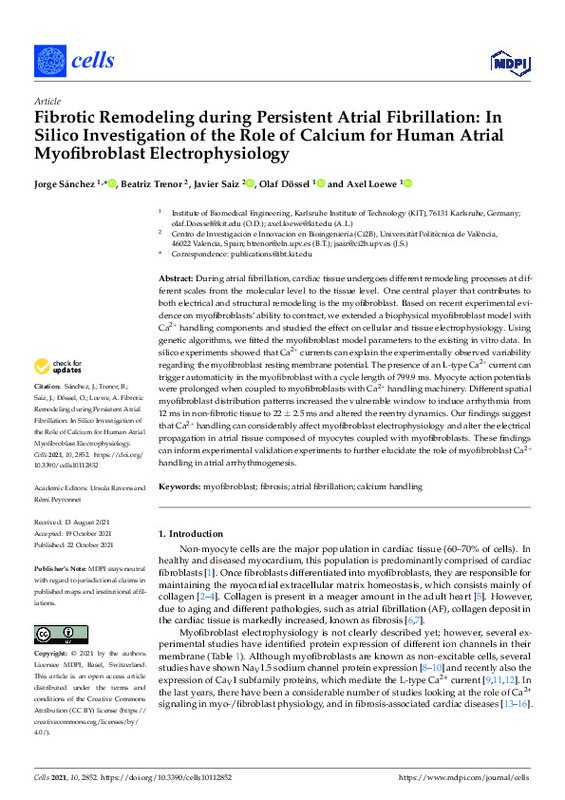JavaScript is disabled for your browser. Some features of this site may not work without it.
Buscar en RiuNet
Listar
Mi cuenta
Estadísticas
Ayuda RiuNet
Admin. UPV
Fibrotic Remodeling during Persistent Atrial Fibrillation: In Silico Investigation of the Role of Calcium for Human Atrial Myofibroblast Electrophysiology
Mostrar el registro completo del ítem
Sánchez, J.; Trenor Gomis, BA.; Saiz Rodríguez, FJ.; Dossel, O.; Loewe, A. (2021). Fibrotic Remodeling during Persistent Atrial Fibrillation: In Silico Investigation of the Role of Calcium for Human Atrial Myofibroblast Electrophysiology. Cells. 10(11):1-15. https://doi.org/10.3390/cells10112852
Por favor, use este identificador para citar o enlazar este ítem: http://hdl.handle.net/10251/180365
Ficheros en el ítem
Metadatos del ítem
| Título: | Fibrotic Remodeling during Persistent Atrial Fibrillation: In Silico Investigation of the Role of Calcium for Human Atrial Myofibroblast Electrophysiology | |
| Autor: | Sánchez, Jorge Dossel, Olaf Loewe, Axel | |
| Entidad UPV: |
|
|
| Fecha difusión: |
|
|
| Resumen: |
[EN] During atrial fibrillation, cardiac tissue undergoes different remodeling processes at different scales from the molecular level to the tissue level. One central player that contributes to both electrical and structural ...[+]
|
|
| Palabras clave: |
|
|
| Derechos de uso: | Reconocimiento (by) | |
| Fuente: |
|
|
| DOI: |
|
|
| Editorial: |
|
|
| Versión del editor: | https://doi.org/10.3390/cells10112852 | |
| Código del Proyecto: |
|
|
| Agradecimientos: |
We gratefully acknowledge financial support by the Deutsche Forschungsgemeinschaft (DFG) through DO637/22-3 and LO2093/1-1 and by the KIT-Publication Fund of the Karlsruhe Institute of Technology. This work was supported ...[+]
|
|
| Tipo: |
|









